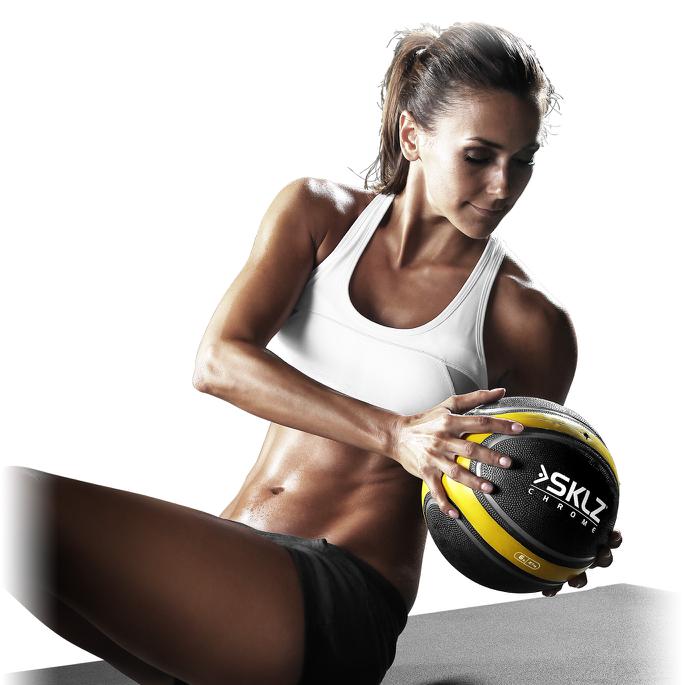Metabolic conditioning is one of the buzz words in modern strength and conditioning. This refers to training the energy pathways that are used in a sporting context, the idea being to make the athlete more resistant to fatigue so that he or she can perform the sport at a high level especially in the later parts of a game or match. In the good old days this was called getting in shape, but metabolic conditioning sounds both more scientific and less threatening.
Like all new and trendy things, we have a tendency to embrace it without really thinking about it. There are many great tools and routines that are used as part of a conditioning program. With that in mind, this is the first of a series of posts to try to get the coach to think about this a little bit. This series of posts will have five things for the coach to keep in mind with regards to conditioning:
1. Conditioning is not speed endurance.
2. Conditioning is usually a general quality.
3. Making conditioning sport-specific has challenges.
4. Not all conditioning tools are equal.
5. What to do?
Today’s post is going to cover the first two points. We’ll address points three and four in the next post. The final post is going to provide suggestions on what the coach can do.
Conditioning is not speed endurance.
To learn how to coach athletes to sprint fast, many of us went to the experts on running fast, track coaches. Track coaches divide a sprint into three “phases;” acceleration (increasing velocity), maximum velocity (the fastest that you can run), and speed endurance. This is where things can get confusing for a non-track and field coach. Speed endurance is about maintaining maximal velocity as long as possible during a race, i.e. slowing down the least. This is a very different concept than being able to maintain effort and intensity in the second half of a game. Speed endurance is trained with longer sprints, done at close to maximal velocity, with complete recovery between each sprint. Why? Because sprinters need to train to run at maximal velocity with good technique. This is not how conditioning is conducted! A 100 meter sprinter might perform a 300 meter sprint, rest ten minutes, then run it again – that might be their speed endurance workout. That’s not the same thing that a soccer player is going to do to develop the conditioning to perform at a high level in the second half of a match.
Conditioning is usually a general quality.
With team sports, conditioning workouts are usually performed in a group setting. This is so that coaches can maximize space and time and it develops a sense of team (i.e. shared misery creates a sense of team). Outside of elite/professional programs or one-on-one private coaching situations, this is how the bulk of team conditioning is going to be performed. This is important to realize because it means that it going to be impossible to individualize each conditioning setting to address it to how the athlete experiences the sport. For example, an offensive tackle experiences the game of football differently than a wide receiver.
Even with good intentions, the way conditioning is conducted can have dubious transfer to the sport. Normally we conduct conditioning around work:rest ratios in the sport as well as the lengths of plays. For example, let’s say that we have a sport with an average play length of 20 seconds followed by sixty seconds of recovery. Maybe, on average, there are ten of those plays in a quarter.
With this in mind, it would not be unusual to see a conditioning session built around that information. For example, 20 second efforts, followed by sixty seconds of recovery, repeated ten times.
This sounds good so far. Today, with there being so many implements for conditioning, it’s not unusual to pick something like a sled, tire flips, kettlebells, heavy ropes, or even sprinting for the conditioning workout described above. Here’s the problem, none of that resembles what the athlete is doing in the sport, which makes this “general” training to use classic periodization terminology.
Take basketball as an example. I play and coach the sport. I also use a lot of kettlebell, jump rope, and core work for my personal conditioning workouts. These workouts burn a lot of calories and leave me in great shape. But they are not the same thing as running up and down the court, changing directions, etc. during a basketball game – they don’t do a very good job of preparing you for the sport even if the lengths and ratios are “correct.”
The next post is going to discuss the challenges with making conditioning sport specific as well as the challenges with some of the tools that we commonly use with conditioning sessions.



1 thought on “Metabolic Conditioning: A General Quality?”
Couple great things you are pointing out
1- keep it simple…exp..Volleyball/Tennis players would be well served to perform maximal speed short sprints with lots of change of direction to build their Sports Specific Endurance 10’s, 20’s,40’s 60’s and 80’s in shuttle style working on change of direction and returning to center court or their starting point. SAID principle at it’s finest!!!
2-Allow some recovery…using a 20 sec work to 10 sec rest (Tabata style) training program will not provide many benefits to the 2 Sports listed above
3- For any Coaches wanting to get a feel for Sport Specific Conditioning…take a stopwatch to the event and time the work and recovery while specifically following 1 person….
Great posts John…I only Wish My Coaches and Athletes would read these!!!
Comments are closed.